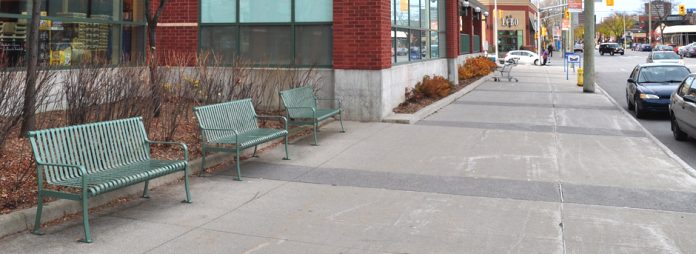Special to KT by Alice Fyfe –
As development issues dominated the recent municipal election, longtime Kitchissippi residents will recall one of the earliest and largest development battles – that of the Loblaws/Superstore at the corner of Richmond Road and Kirkwood Avenue. The store turned 11 years old last month, and with that in mind, we thought it might be interesting to take a look back with some of the key players and see what their current impressions are, all these years later. Alice Fyfe, the author of this piece, offers up a unique perspective. She is a resident of Wellington Village and an urban planner who worked for FoTenn Consultants Inc. from 1999 to 2003, representing Loblaws, (along with Ted Fobert, Partner at FoTenn) development and approvals process.
On behalf of The Kitchissippi Times, Alice spoke with Lorne Cutler (President of the Hampton-Iona Community Group), John Smit (Manager, Development Review with the City of Ottawa) and Christine Leadman (former Executive Director of the Westboro BIA and Kitchissippi Ward Councillor, now Executive Director of the Bank Street BIA) about their thoughts on how some of these concerns played out over the years.
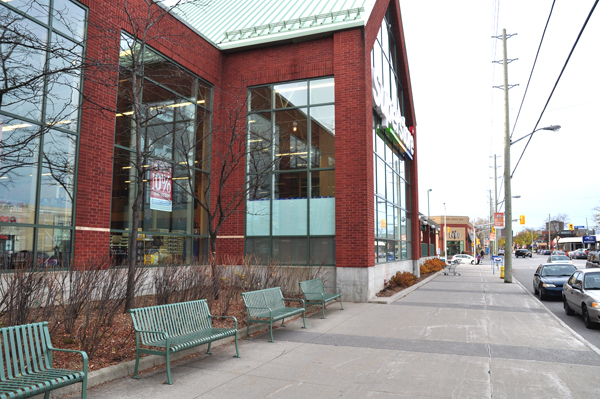
The Superstore proposal was one of the largest and by some accounts, one of the most controversial developments in its day.
In April 2000, Ottawa City Council voted 7-4 in favour of a rezoning to accommodate a store on the site of a former Crain-Drummond printing factory at the corner of Richmond Road and Kirkwood Avenue. The late Shawn Little was Councillor at the time. [story continues below]
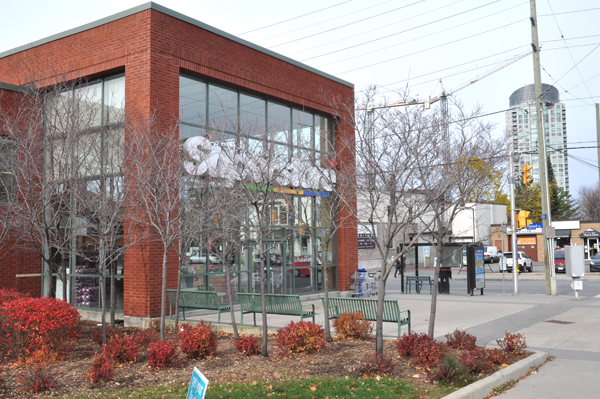
The rezoning application was appealed by area residents to the Ontario Municipal Board, culminating in a six-week hearing in 2001. Some of the key issues related to the size of the store, its urban design, traffic, and possible market impacts on the surrounding retail area.
Lorne Cutler was an active opponent, but says he was “against the size of the store, not the concept of the grocery store.” Today, Cutler says the store has definitely brought its share of “plusses and minuses” to the community.
“In terms of traffic impact, Kirkwood Avenue is far worse, although Loblaws is not the only traffic generator,” says Cutler.
With regard to urban design, he says that the “boutique” concept which was proposed along the front of the store – with separate entrances to a florist, a café and so on – never truly came into practice. [story continues below]
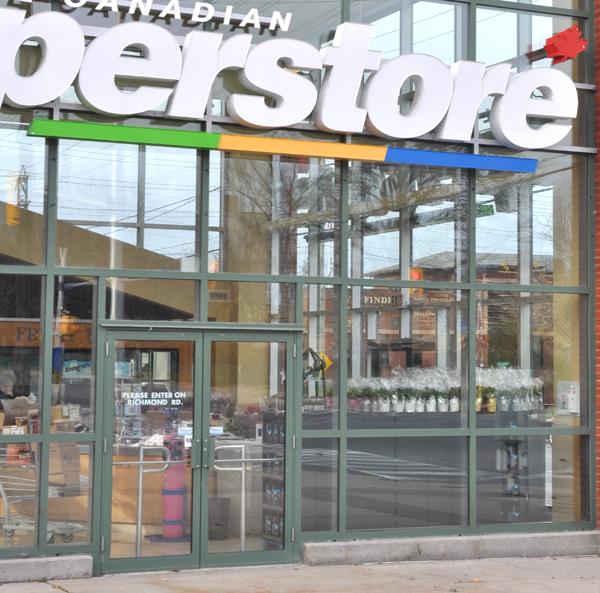
In terms of the store’s street front presence, he feels it is lacking due to its “large wide sidewalk with minimal landscaping” and indicates that the frontage along Byron Avenue has yet to be developed with residential properties, as outlined in the original development proposal.
But there has been a plus side. “Loblaws has been a good corporate citizen in the community – by contributing to Westfest over the years and local schools, such as Hilson Avenue Public School,” notes Cutler. “They have been a good source of employment in the neighbourhood – particularly for high school students seeking part-time jobs.”
Concerns that other smaller food retailers – such as Metro and Herb and Spice – might close did not come to fruition, he says, largely because they decided to follow a different retail model.
John Smit appeared as a witness in support of the City at the OMB hearing. “When Loblaws initially presented its concept, it showed the store setback on the site with parking in front,” recalls Smit. “The City instead encouraged the company to align the building along the front of the street, with parking to the rear. With this concept came the inclusion of separate CRUs (commercial retail units such as a florist, café, wine store) – but at the end of the day, gradient issues along the front were an impediment to separate entrances.”
In any event, Smit believes that having the building front on to Richmond Road ultimately contributed to the growth of the neighbourhood and served as a critical piece in making the neighbourhood a more attractive place to live.
“Loblaws – and MEC – were the first development initiatives whereby Ottawa residents started to see Westboro in a different light,” says Smit. “They were catalysts for growth, putting Richmond Road and Wellington Street on the map as destinations.”
As for potential retail impacts on surrounding businesses, Smit says neighbouring food stores “found their own niches and adapted accordingly.”
Reflecting on her position as the Executive Director of the Westboro BIA at the time, Christine Leadman recalls the many concerns from the community – and notes that the BIA board did not act arbitrarily in their decision to support the store. [story continues below]
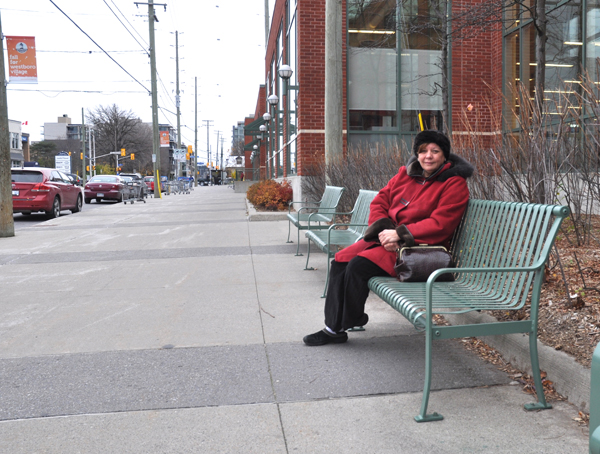
“Ninety per cent of the retailers we surveyed were in support of the development,” recalls Leadman. With that direction, Leadman was a supporter.
Leadman recalls that at the time, growth in the community – coupled with the City’s intensification policies – was starting to accelerate and that Loblaws has filled the need for a new and larger grocery store in the community.
Unlike MEC, which Leadman notes is a “destination store” that draws people from all over the city and creates potentially larger traffic impacts, she says that a grocery store of this type is a local draw that generates mostly local traffic.
Like the others, Leadman notes that the long established smaller food retailers remain, despite earlier concerns over possible closures.
“While many people do shop at Loblaws, they still continue to go to Sasloves, Herb and Spice, The Bagel Shop and Metro,” says Leadman.
Although the debate surrounding the establishment of the store is years behind the community, one thing clearly remains all these years later – as evidenced by the recent election campaign – concerns about development pressure and the potential impact on Kitchissippi remain.
Do you have anything to add to this story? We’d love to hear your thoughts and memories from the time as well as your experiences today. Send your email to editor@kitchissippi.com. Curious about what was on this site before the Superstore took over? You might find this interesting.
